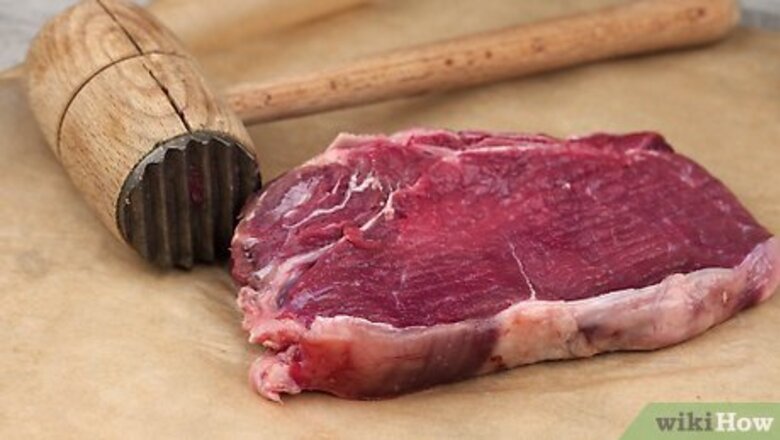
views
Using Mechanical and Thermal Methods

Place the beef between wax paper and pound it for a few minutes. The wax paper protects the meat and your counter. Pound the beef with anything heavy you have on hand, from a kitchen mallet to a heavy skillet or rolling pin. Pounding the meat makes it softer, as well as thinner. This method works best on whole cuts of beef.
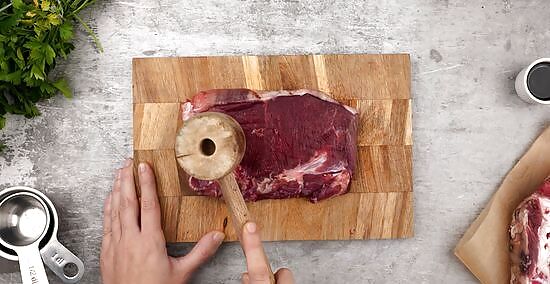
Pound the meat for 2-3 minutes with a spiked meat mallet for frying. Lay the piece of whole meat on a cutting board. Pound one side with the spiked mallet until it thins out. Turn it over and repeat the process. This process breaks up the connective tissues in the meat. While it isn't good for things like grilled steak, it works well for a meat that's breaded, like chicken-fried steak.
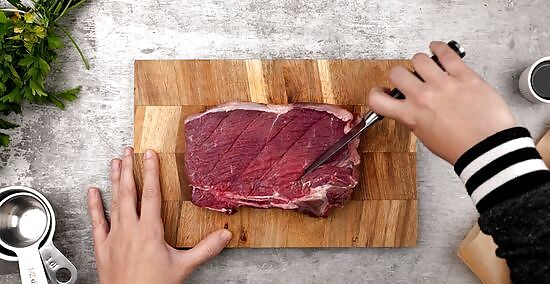
Score meat at ⁄4 in (1.9 cm) intervals with a knife to break up fibers. Take a knife, and make diagonal cuts across the top of the meat in one direction, at an angle to the grain. Turn it, and make perpendicular cuts across the meat the other way. This method breaks up some of the longer muscle fibers, making it taste a bit more tender. It works well on cheap steak cuts.

Cook collagen-rich meat low and slow to break down connective tissues. Use meats that have a lot of collagen, such as brisket. Applying low heat over a long period of time helps break down the collagen, resulting in a tender and juicy meat. This method also works well for chuck roast or bottom round. For an easy way to do this method, use a slow cooker. You can also use a grill or an oven, as long as you keep the heat low. You will need to cook the meat for at least an hour per 1 pound (0.45 kg) of beef at about 250 °F (121 °C).
Adding Single-Ingredient Tenderizers
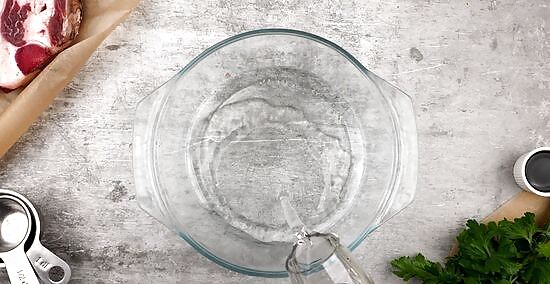
Soak the beef in water and baking soda for a cheap solution. You only need a small amount of baking soda, as little as a 1/4 teaspoon (1.5 g). Add it to ⁄4 pound (0.34 kg) of meat that hasn't been sliced or cut. Add just enough water to cover the beef in a narrow bowl or pan, and soak the meat for 15 minutes. Dry the meat off if your frying or grilling it so you can get a nice sear. The baking soda changes the pH of the meat's surface. In turn, it can't bind together as tightly, which makes it more tender. If the meat is cut into several pieces, use 1 teaspoon (6 g) of baking soda. You can use this method on whole cuts of beef as well as on ground beef. Soak the beef up to an hour with no ill effects.

Sprinkle sea salt or kosher salt on to thick steaks to draw out moisture. Use 1/2 to 1 teaspoon (2.5 to 5 g) of salt per side, which will look like a lot of salt. Let the steak sit at room temperature for 1 hour for every 1 inch (2.5 cm) it is thick. After it rests, rinse of the excess salt, and use paper towels to dab the steak dry. This method will draw water to the surface, which you rinse off. It leaves behind the juicy fats and proteins, making it more tender and flavorful. It also helps get salt to the inside of the meat. Make sure the outside of the steak is very dry before grilling or else you won't get a good sear.
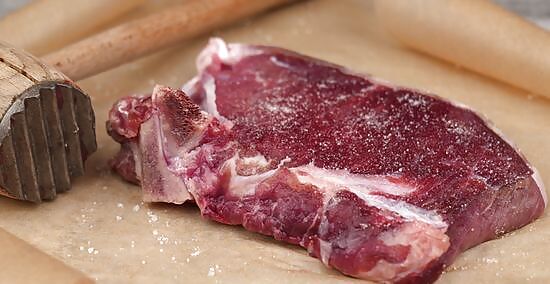
Try a pre-mixed powdered tenderizer for a simple solution. These tenderizers contain salt, sugar, cornstarch, and bromelain. You can sprinkle it on the meat, and let it sit for about 30 minutes before cooking. If you want, you can rinse it off before cooking, but just be sure to pat the meat dry if you're frying or grilling so you get a nice sear. This works best for meats that are going to be breaded, such as chicken fried steak or beef coated in cornstarch for stirfries. The bromelain is derived from pineapple, so you get the tenderizing effect without the pineapple flavor.
Marinating Your Meat with Tenderizing Ingredients
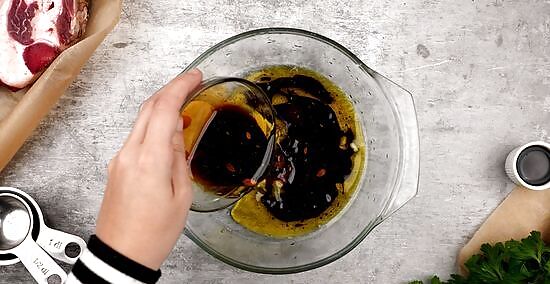
Use 1 to 2 tablespoons (15 to 30 mL) of pureed kiwi for a mild marinade. Do this for every 1 cup (240 mL) of marinade you make. Kiwi has chemical properties that help tenderize the meat without adding a strong flavor. Try a marinade like 1 cup (240 mL) of chopped kiwi, 2 teaspoons (9.9 mL) of soy sauce, 2 teaspoons (9.9 mL) of tomato sauce, 4 teaspoons (20 mL) of Worcestershire sauce, and 2 minced garlic cloves. Let the meat soak at least overnight. You can use pineapple or papaya in place of the kiwi, if desired.
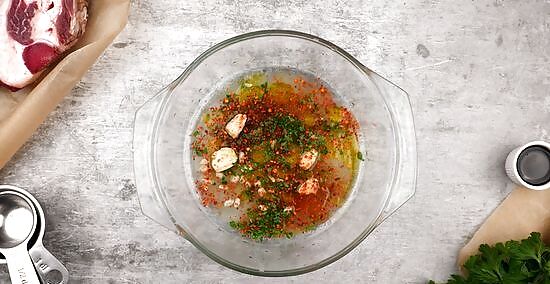
Apply a highly-acidic marinade to tough cuts of steak only. Highly acidic marinades can actually toughen meats like shrimp or fish. However, for a tough cut of steak, such as flank steak, the marinade will not penetrate very far, and you can flavor the meat without making it tougher. Try an acidic marinade for something like fajitas. Pour the following ingredients into a bag: 2 tablespoons (30 mL) of olive oil, ⁄3 cup (79 mL) of lime juice, 2 tablespoons (2 g) of chopped cilantro, 2 crushed garlic cloves, a pinch of brown sugar, a sprinkling of red chili flakes, a couple of dashes of cumin, and a generous sprinkling of salt. Shake up the bag, and place the meat in with the marinade for 1-2 hours. This method also works well on London broil, hangar steak, and skirt steak. You can add acids like vinegar, wine, soda, or citrus juice to make your marinade acidic.

Try using a dairy-based marinade to avoid mushiness. Some cooks swear by using dairy to tenderize, such as milk, yogurt, or sour cream, as it tenderizes without making the meat too soft. You can add whatever flavors you want to the dairy, and soak it for several hours. For instance, try soaking a cheap cut of steak in buttermilk with a sprinkling of salt, pepper, garlic powder, and onion powder. Dip it in flour, and fry it up for chicken-fried steak.




















Comments
0 comment